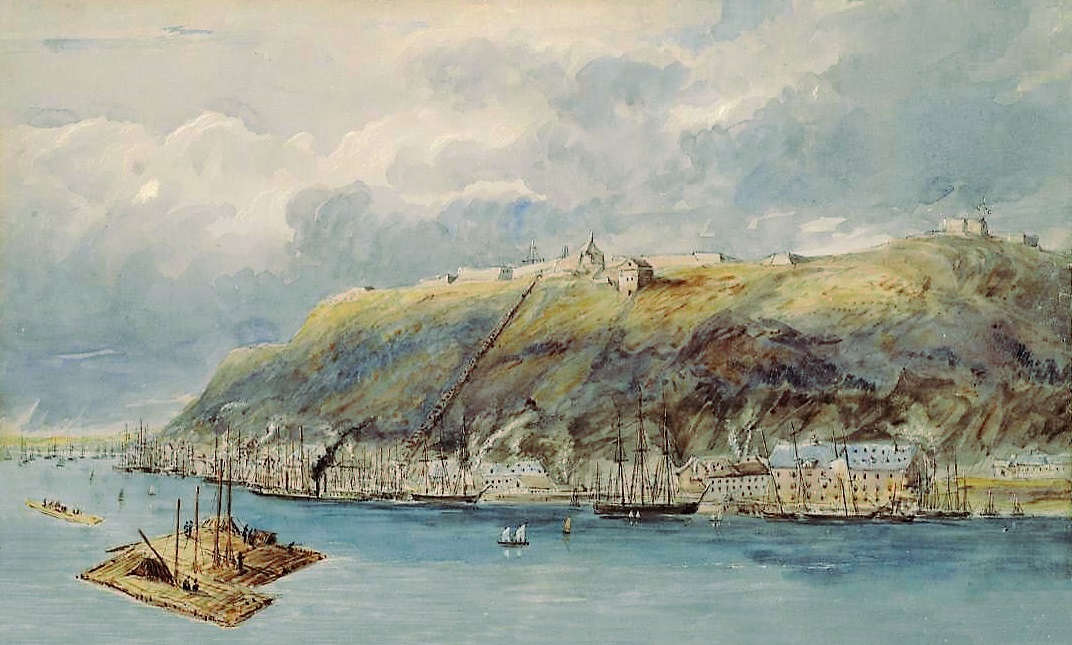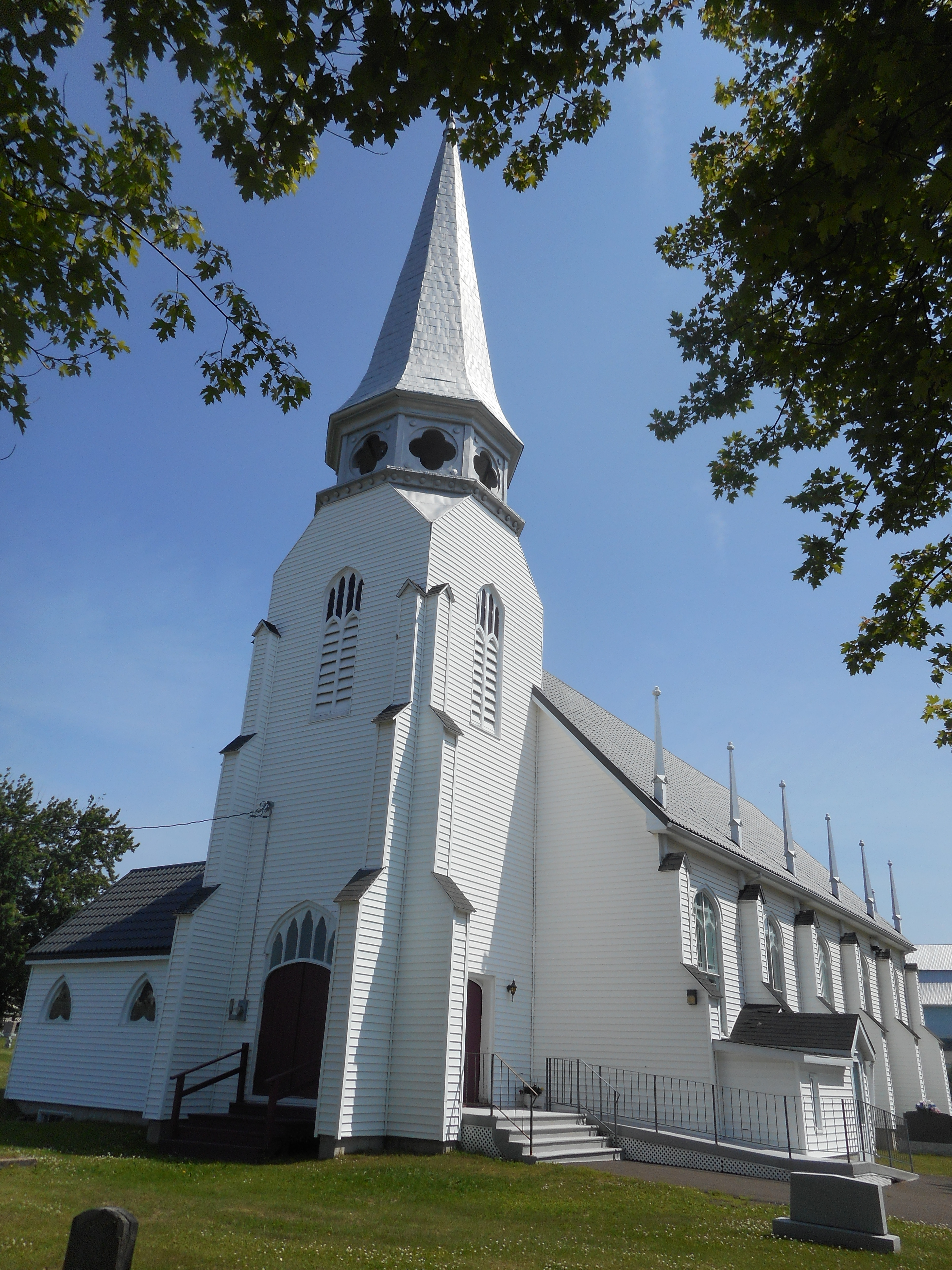John Robinson Hamilton on:
[Wikipedia]
[Google]
[Amazon]
John Robinson Hamilton, QC (March 5, 1808 – December 24, 1870) was a lawyer and political figure in
/ref> He studied law with

 In the general election of 1830, Hamilton stood for election to the Legislative Assembly but was apparently defeated by John Gosset. Hamilton brought an election petition, challenging Gosset's election. Lengthy debate occurred in the Assembly, which finally ruled in December 1832 that Hamilton had been elected. He took his seat at that point. In the Assembly, Hamilton took an independent approach, sometimes supporting the Château Clique Tories, and sometimes the
In the general election of 1830, Hamilton stood for election to the Legislative Assembly but was apparently defeated by John Gosset. Hamilton brought an election petition, challenging Gosset's election. Lengthy debate occurred in the Assembly, which finally ruled in December 1832 that Hamilton had been elected. He took his seat at that point. In the Assembly, Hamilton took an independent approach, sometimes supporting the Château Clique Tories, and sometimes the
 He died at New Carlisle in 1870 at the age of 62, and is buried at St Andrew's Anglican church, New Carlisle.
He died at New Carlisle in 1870 at the age of 62, and is buried at St Andrew's Anglican church, New Carlisle.
Lower Canada
The Province of Lower Canada (french: province du Bas-Canada) was a British colony on the lower Saint Lawrence River and the shores of the Gulf of Saint Lawrence (1791–1841). It covered the southern portion of the current Province of Quebec an ...
and then the Province of Canada
The Province of Canada (or the United Province of Canada or the United Canadas) was a British North America, British colony in North America from 1841 to 1867. Its formation reflected recommendations made by John Lambton, 1st Earl of Durham ...
. He represented the electoral district of Bonaventure 1832 to 1834 in the Legislative Assembly of Lower Canada
The Legislative Assembly of Lower Canada was the lower house of the bicameral structure of provincial government in Lower Canada until 1838. The legislative assembly was created by the Constitutional Act of 1791. The lower house consisted of ele ...
. Following the creation of the Province of Canada
The Province of Canada (or the United Province of Canada or the United Canadas) was a British North America, British colony in North America from 1841 to 1867. Its formation reflected recommendations made by John Lambton, 1st Earl of Durham ...
, he again represented Bonaventure
Bonaventure ( ; it, Bonaventura ; la, Bonaventura de Balneoregio; 1221 – 15 July 1274), born Giovanni di Fidanza, was an Italian Catholic Franciscan, bishop, cardinal, scholastic theologian and philosopher.
The seventh Minister G ...
from 1841 to 1844 in the Legislative Assembly of the Province of Canada
The Legislative Assembly of the Province of Canada was the lower house of the legislature for the Province of Canada, which consisted of the former provinces of Lower Canada, then known as Canada East and later the province of Quebec, and Upper C ...
. He opposed the union of Lower Canada
The Province of Lower Canada (french: province du Bas-Canada) was a British colony on the lower Saint Lawrence River and the shores of the Gulf of Saint Lawrence (1791–1841). It covered the southern portion of the current Province of Quebec an ...
and Upper Canada
The Province of Upper Canada (french: link=no, province du Haut-Canada) was a part of British Canada established in 1791 by the Kingdom of Great Britain, to govern the central third of the lands in British North America, formerly part of the ...
into the Province of Canada, and supported the reform movement, which favoured responsible government
Responsible government is a conception of a system of government that embodies the principle of parliamentary accountability, the foundation of the Westminster system of parliamentary democracy. Governments (the equivalent of the executive bran ...
Early life and family
Hamilton was born inQuebec City
Quebec City ( or ; french: Ville de Québec), officially Québec (), is the capital city of the Provinces and territories of Canada, Canadian province of Quebec. As of July 2021, the city had a population of 549,459, and the Communauté métrop ...
, the son of Gavin Major Hamilton, a merchant, and Mary Robinson. His father died young, when Hamilton was only eleven years old. His mother later married a French-Canadian, François Pellet, which may have accounted for Hamilton's fluent bilingualism.Ken Annett, "Gaspé of Yesterday 56: The Life and Times of John Robinson Hamilton"./ref> He studied law with
Joseph-Rémi Vallières de Saint-Réal
Joseph-Rémi Vallières de Saint-Réal (October 1, 1787 – February 17, 1847) was a lawyer, judge and political figure in Lower Canada.
He was born Joseph-Rémi Vallières in Carleton in 1787, the son of a blacksmith, and moved to Windham ...
, and then Andrew Stuart and Henry Black, in Quebec City. Hamilton was called to the bar in 1830 and moved to the Gaspé to begin his practice. In 1844, he was appointed Queen's Counsel
In the United Kingdom and in some Commonwealth of Nations, Commonwealth countries, a King's Counsel (Post-nominal letters, post-nominal initials KC) during the reign of a king, or Queen's Counsel (post-nominal initials QC) during the reign of ...
, a mark of distinction and service in the legal profession.John Robinson Hamilton,
In 1831, he married Eliza Racey in New York city. They would have four daughters and five sons. One son, Clarence Hamilton served in the Legislative Assembly of Quebec
The Legislative Assembly of Quebec (French: ''Assemblée législative du Québec'') was the name of the lower house of Quebec's legislature from 1867 to December 31, 1968, when it was renamed the National Assembly of Quebec. At the same time, t ...
.
Political career
Lower Canada

 In the general election of 1830, Hamilton stood for election to the Legislative Assembly but was apparently defeated by John Gosset. Hamilton brought an election petition, challenging Gosset's election. Lengthy debate occurred in the Assembly, which finally ruled in December 1832 that Hamilton had been elected. He took his seat at that point. In the Assembly, Hamilton took an independent approach, sometimes supporting the Château Clique Tories, and sometimes the
In the general election of 1830, Hamilton stood for election to the Legislative Assembly but was apparently defeated by John Gosset. Hamilton brought an election petition, challenging Gosset's election. Lengthy debate occurred in the Assembly, which finally ruled in December 1832 that Hamilton had been elected. He took his seat at that point. In the Assembly, Hamilton took an independent approach, sometimes supporting the Château Clique Tories, and sometimes the Parti patriote
The Parti canadien () or Parti patriote () was a primarily francophone political party in what is now Quebec founded by members of the liberal elite of Lower Canada at the beginning of the 19th century. Its members were made up of liberal prof ...
. However, he voted against the Ninety-Two Resolutions The Ninety-Two Resolutions were drafted by Louis-Joseph Papineau and other members of the ''Parti patriote'' of Lower Canada in 1834. The resolutions were a long series of demands for political reforms in the British-governed colony.
Papineau had b ...
, put forward by Louis-Joseph Papineau
Louis-Joseph Papineau (October 7, 1786 – September 23, 1871), born in Montreal, Quebec, was a politician, lawyer, and the landlord of the ''seigneurie de la Petite-Nation''. He was the leader of the reformist Patriote movement before the Lower ...
and the Parti patriote, which called on the British government to make significant reforms to the provincial government.
Hamilton was defeated when he ran for reelection to the Lower Canada Assembly in 1834.
Province of Canada
Following the rebellion in Lower Canada, and the similar rebellion in 1837 inUpper Canada
The Province of Upper Canada (french: link=no, province du Haut-Canada) was a part of British Canada established in 1791 by the Kingdom of Great Britain, to govern the central third of the lands in British North America, formerly part of the ...
(now Ontario
Ontario ( ; ) is one of the thirteen provinces and territories of Canada.Ontario is located in the geographic eastern half of Canada, but it has historically and politically been considered to be part of Central Canada. Located in Central Ca ...
), the British government decided to merge the two provinces into a single province, as recommended by Lord Durham
Earl of Durham is a title in the Peerage of the United Kingdom. It was created in 1833 for the Whig politician and colonial official John Lambton, 1st Baron Durham. Known as "Radical Jack", he played a leading role in the passing of the Gre ...
in the Durham Report
The ''Report on the Affairs of British North America'', (1839) commonly known as the ''Durham Report'' or ''Lord Durham's Report'', is an important document in the history of Quebec, Ontario, Canada and the British Empire.
The notable British ...
. The ''Union Act, 1840'', passed by the British Parliament
The Parliament of the United Kingdom is the supreme legislative body of the United Kingdom, the Crown Dependencies and the British Overseas Territories. It meets at the Palace of Westminster, London. It alone possesses legislative supremacy ...
, abolished the two provinces and their separate parliaments, and created the Province of Canada
The Province of Canada (or the United Province of Canada or the United Canadas) was a British North America, British colony in North America from 1841 to 1867. Its formation reflected recommendations made by John Lambton, 1st Earl of Durham ...
, with a single parliament for the entire province, composed of an elected Legislative Assembly and an appointed Legislative Council.
Hamilton stood for election in the first general election in the new province, in 1841. He was elected to the Legislative Assembly of the Province of Canada
The Legislative Assembly of the Province of Canada was the lower house of the legislature for the Province of Canada, which consisted of the former provinces of Lower Canada, then known as Canada East and later the province of Quebec, and Upper C ...
.
In the new Assembly, Hamilton continued to take an independent approach. In the first session, he was an opponent of the new union, but also tended to support the government of the Governor-General, Lord Sydenham. Over the next sessions, he tended to support the Reform group, but in 1843, when the Reform ministry resigned, he supported the new governor-general, Sir Charles Metcalfe.Paul G. Cornell, ''Alignment of Political Groups in Canada, 1841-67'' (Toronto: University of Toronto Press, 1962; reprinted in paperback 2015), pp. 5, 7, 12, 93-97.
Hamilton was defeated in his bid for re-election in 1844, and in subsequent elections of 1848 and 1851. He ran unsuccessfully for a seat in the Legislative Council in 1858.
Death
 He died at New Carlisle in 1870 at the age of 62, and is buried at St Andrew's Anglican church, New Carlisle.
He died at New Carlisle in 1870 at the age of 62, and is buried at St Andrew's Anglican church, New Carlisle.
References
{{DEFAULTSORT:Hamilton, John Robinson 1808 births 1870 deaths Members of the Legislative Assembly of Lower Canada Members of the Legislative Assembly of the Province of Canada from Canada East Politicians from Quebec City